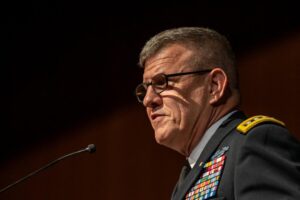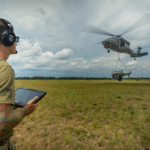
The head of the Army’s modernization-focused Futures Command said Thursday he’s “all in” on artificial intelligence’s potential ability to help inform commanders’ decisions, while cautioning that allowing the technology itself to make decisions “would be a disastrous mistake.” “So when I get asked about things like AI, machine learning [and] quantum, I’m all in. I mean whoever figures that out is going to have an incredible, marked advantage, akin to like the nuclear arms race, space race. It’s that big…

 By
By 











